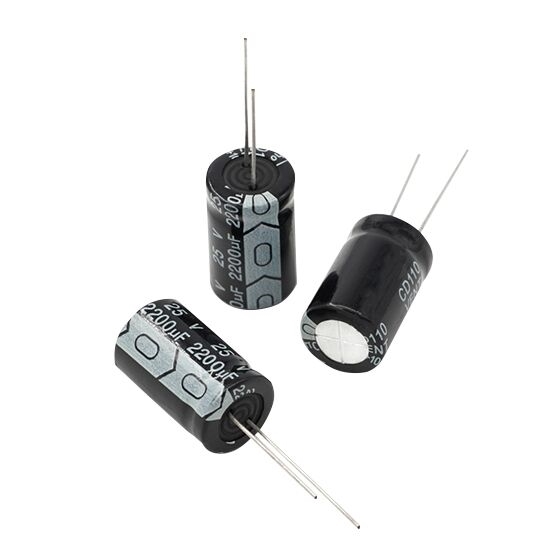
- Stock: In Stock
- Model: RDDLZ-EC-KF101M
- Weight: 1.00
- SKU: RDDLZ-EC-KF101M
Available Options
Factory price electrolytic capacitor with operating tempertaure -40~105℃, 2000 hours up to 5000 hours endurance. The power capacitor has advantages of high reliability, small size and long service life.
Features
- Endurance: 105℃- 2000 hours up to 5000 hours
- Low impedance and high ripple current
- High reliability
- Wide voltage range
Specification
| Model | RDDLZ-EC-KF101M | |
| Series | Low impedance 105°C type | |
| Capacity | 100 ㎌ | |
| Rated voltage | 16V | |
| Installation Type | Direct plug | |
| Size | 6.3*5.5 mm | |
| Operating temperature | -40~105℃ | |
| Cap. tolerance (∆C) | ±20% (120Hz 20℃) | |
| Dissipation factor (tanδ) | 14% | |
| Low temperature characteristic at 120Hz (Z ratio max.) | 3 (Z-25℃/ Z+20℃) | |
| Leakage current (Lleak) | ≤0.01*CR*VR or 3 ㎂ * after 2 minutes | |
| Enduarance (105℃) | Test | 2000h |
| ∆C | ≤20% of initial measured value | |
| tanδ | ≤200% of specified measured value | |
| Lleak | ≤ the specified measured value | |
| Shelf life (105℃) | Test | 1000h |
| ∆C | ≤20% of initial measured value | |
| tanδ | ≤200% of specified measured value | |
| Lleak | ≤ the specified measured value | |
Dimension (mm)
| Model | Dimension (mm) | |
| RDDLZ-EC-KF101M | ∅D | 6.3 |
| F | 2.5 | |
| ∅d | 0.5 | |
| a | 1.5 | |
Tips: Working Principle of Electrolytic Capacitor.
Electrolytic capacitors usually use metal foil (aluminum/tantalum) as the positive electrode, and the insulating oxide layer of the metal foil (alumina/tantalum pentoxide) as the dielectric. Electrolytic capacitors are divided into aluminum electrolytic capacitors and tantalum electrolytic capacitors based on their positive electrodes. capacitor. The negative electrode of aluminum electrolytic capacitors consists of thin paper/film or electrolyte polymer soaked in an electrolyte (liquid electrolyte); the negative electrode of tantalum electrolytic capacitors is usually manganese dioxide. Electrolytic capacitors get their name because they use electrolytes as negative electrodes (note the distinction from dielectrics).
